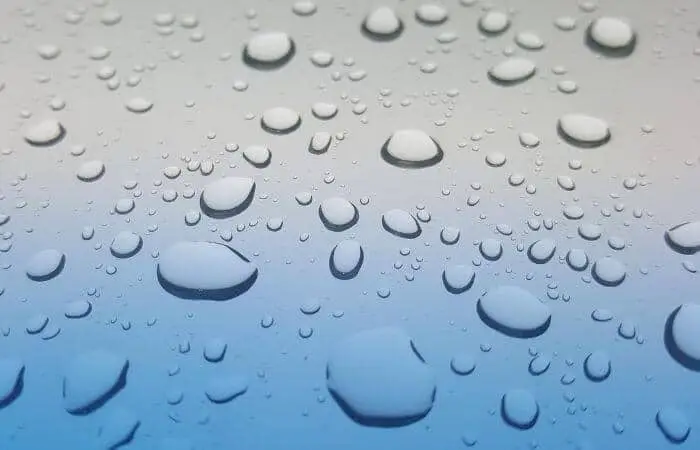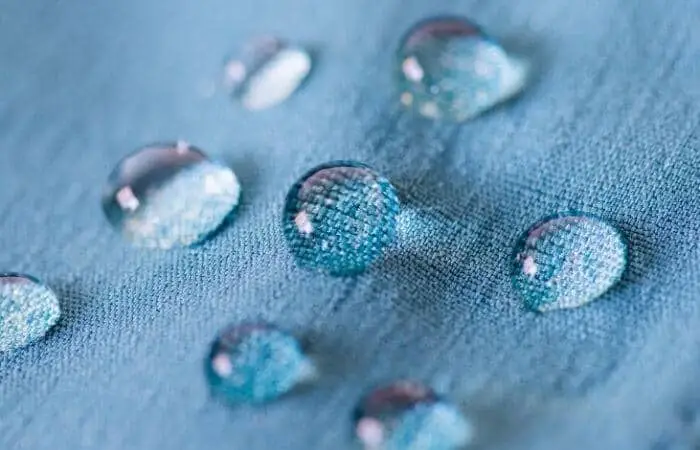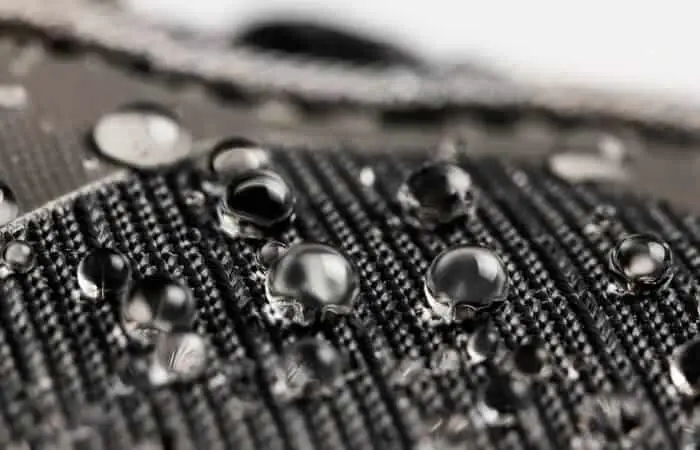There is a significant difference between waterproof, water repellent and water-resistant.
Not being aware of these differences has caused thousands of people to make very expensive mistakes!
It is basically a sliding scale, waterproof items cannot be penetrated by water at all, water repellent items are very difficult for water to penetrate and water-resistant items can survive low-level exposure to water such as rain.
- Waterproof items are impervious to water.
For example, you could take a waterproof watch diving with you and it would be fine (providing you don’t dive so deep that the water pressure breaks it!). - Water repellent items are very difficult for water to penetrate, they often use hydrophobic treatments such as waterproof sprays to repel water.
For example, outdoor jackets use hydrophobic sprays to keep water out while still allowing the jacket to breathe preventing the wearer from becoming uncomfortable. - Water-resistant items can handle low-level exposure to water such as rain or humidity.
For example, a water-resistant watch will be fine if you go running with it in light rain, but don’t make the mistake of taking it for a swim!
The Meaning of Waterproof
An item that is waterproof is impervious or impenetrable to water, this means that water cannot get through it nor will the item absorb any water.

You can take it in the bath or go swimming with it and it will not be damaged by the water at all.
Examples of materials which are waterproof include things like:
- Polyurethane
- Concrete
- Rubber
…and many more.
These can be used to make a huge range of waterproof products including things such as clothing, wellies, umbrellas, flat roofs and more.
The I.P Code is the closest thing to standardization when it comes to waterproofing, this code assigns a score from 0-8 based on how good an item is at keeping water out.
A fully waterproof item would be expected to achieve a score of 8 which means it can be submerged at a depth of more than 1 metre without causing any damage.
In the context of waterproof clothing such as outdoor wear, a scale known as a Hydrostatic Head rating is given to fabric.
This is a score that goes from 0mm (no resistance to rain) to 20,000mm+ (rainproof under very high pressure).
Waterproof fabrics score very highly from 16,000-20,000mm+ making them suitable for the most extreme wet weather.
The Meaning Of Water Repellent
An item that is water repellent is very difficult for moisture to penetrate.

Water Repellent items, for example, water repellent jackets have usually been treated with a durable water repellent (DWR) coating.
A good water repellent item would achieve an I.P rating of 5.
Another name for water repellent is ‘hydrophobic’, the word means ‘fear of water’ – repellents literally scare water away!
For example, oil is hydrophobic which is why it doesn’t mix with water but rather floats on the surface.
In fact, many aquatic birds secrete hydrophobic oil onto their feathers to stop themselves from getting weighed down.
Water Repellent sprays work because then contain hydrophobic molecules that are made up of atoms that do not produce a static electric field.
This means there is no opposite attraction to the water molecules.
That makes it impossible for water to form hydrogen bonds with the hydrophobic molecules.
It is important to be aware that over time DWR can break down and wear off, especially if you routinely wash it with a strong detergent.
If you notice water seeping through your tent or your jacket then you will need to re-spray it.
Examples of water repellent products include things like:
- Jackets and outdoor clothes
- Bags
- Some phones
- Wood treatments
- Tents
Outdoor clothes are the most common everyday item which are designed to be water repellent.
The problem with fully waterproof clothes is that they are not breathable meaning that they cause you to sweat a lot and can become very uncomfortable to wear for long periods.
Water repellent clothing repels water, keeping your dry, while also allowing the fabric to remain breathable.
Makes clothes water repellent is generally as simple as treating the fabric with a DWR, however water repellency depends on quite a few different factors:
- Surface Area Angling – the angle at which water hits a water repellent fabric has a big impact on how much water will be absorbed. If a water droplet hits fabric at an angle less than 90 degrees a small amount of water will be absorbed, if the angle is greater than 90 degrees than less water will be absorbed.
- Chemical Compounds – chemicals in the fabric can impact how water repellent it is.
- Fabric Porosity – the more pores there are in fabric the harder it will be to make it water repellent. For example, it doesn’t matter how much DWR you spray onto a string vest it will still let water through!
To truly work out exactly how water repellent a product is scientists evaluate four key things:
- How much water the fabric lets through at a range of different water pressures.
- How much water the fabric lets through in a simulated rainstorm.
- How much water the fabric will actually soak up and absorb.
- How much water the fabric lets through when water is applied from different angles.
Once all four of these have been evaluated then a Hydrostatic Head rating can be given to the fabric.
Water repellent fabrics will score somewhere between 5,000 – 10,000mm making them good for rain and snow, but not so great in a serious high-pressure downpour.
The Meaning Of Water-Resistant
Water-resistance is the lowest tier of protection against water.
Water-resistant products are designed to be fine in light rain or in a very humid environment.

Typically a water-resistant item would achieve an I.P rating of 2-3.
The main difference between waterproof and water-resistant is that if you submerge a waterproof item in water it will be fine, if you submerge a water-resistant item it is likely to break (if it is a tech item).
Example of things which are often water-resistant include:
- Watches
- Phones
- Outdoor clothes
So don’t make the mistake of taking an underwater picture with your phone unless you are certain that your phone is fully waterproof not just water-resistant.
For context, a water-resistant jacket would achieve a hydrostatic head rating between 1,500 – 5000mm+ making it fine for low-pressure light rain and dry snow.
We hope this article has cleared things up a bit and helped you better understand the differences between waterproof, water-repellent and water resistant.

